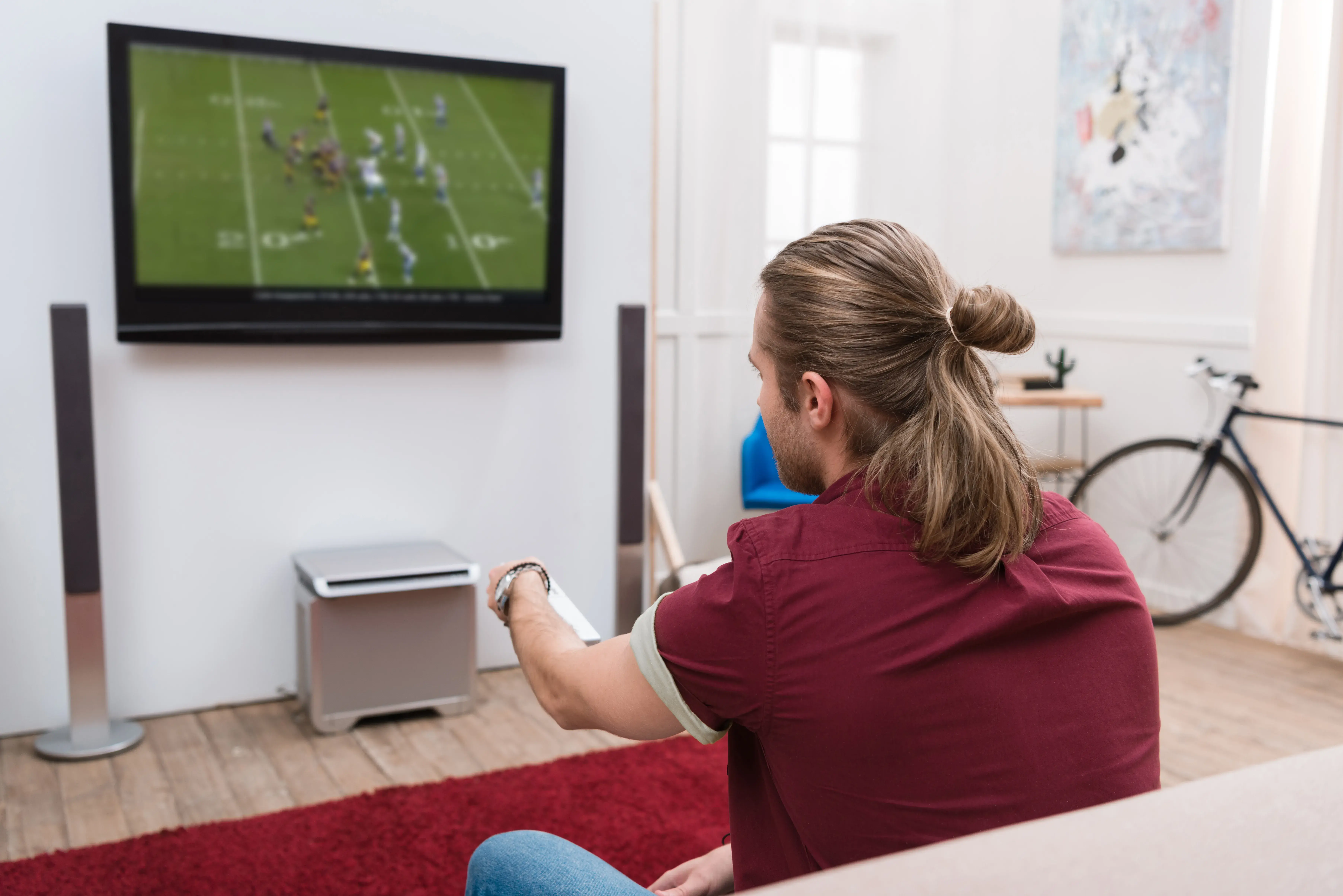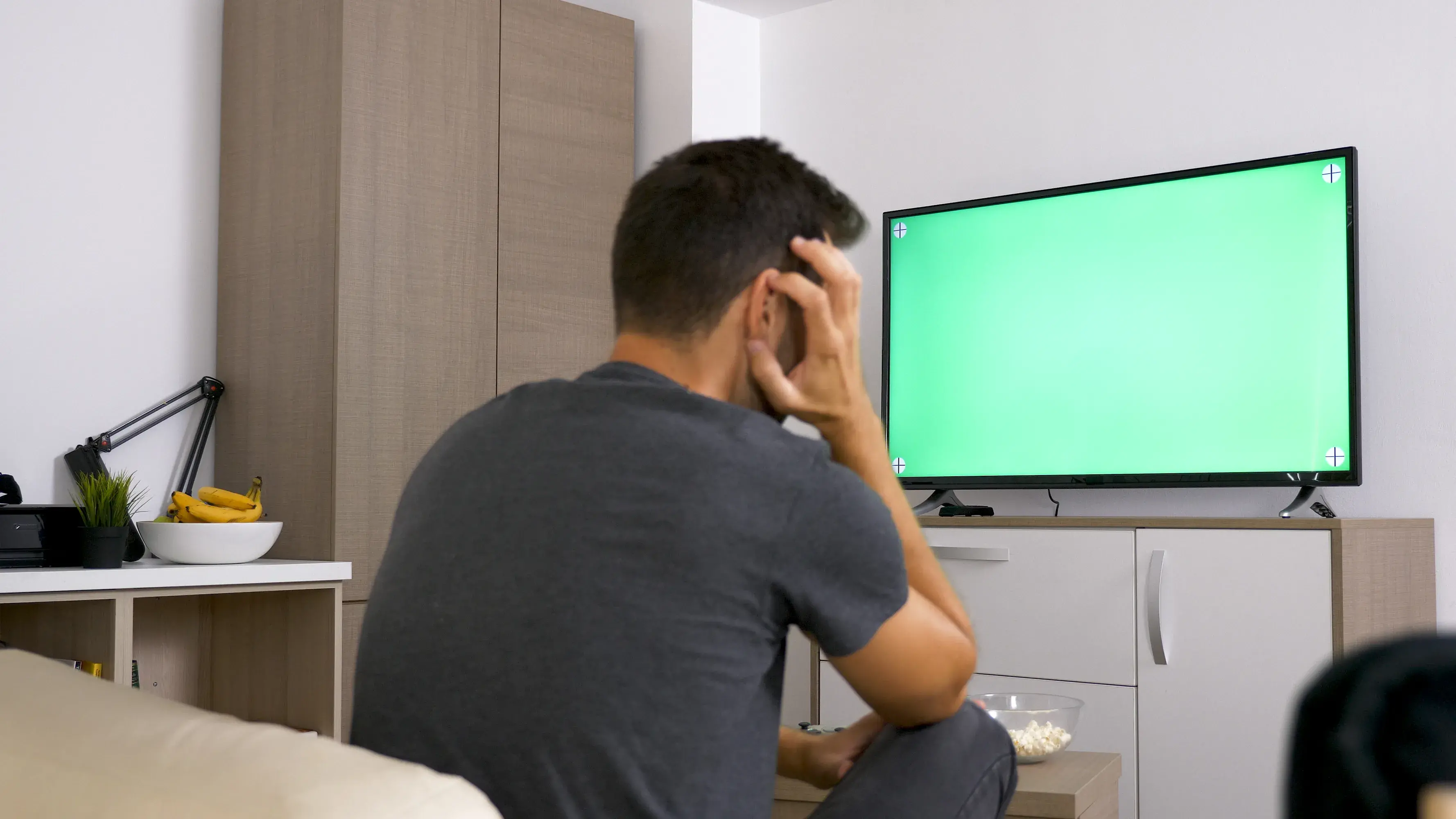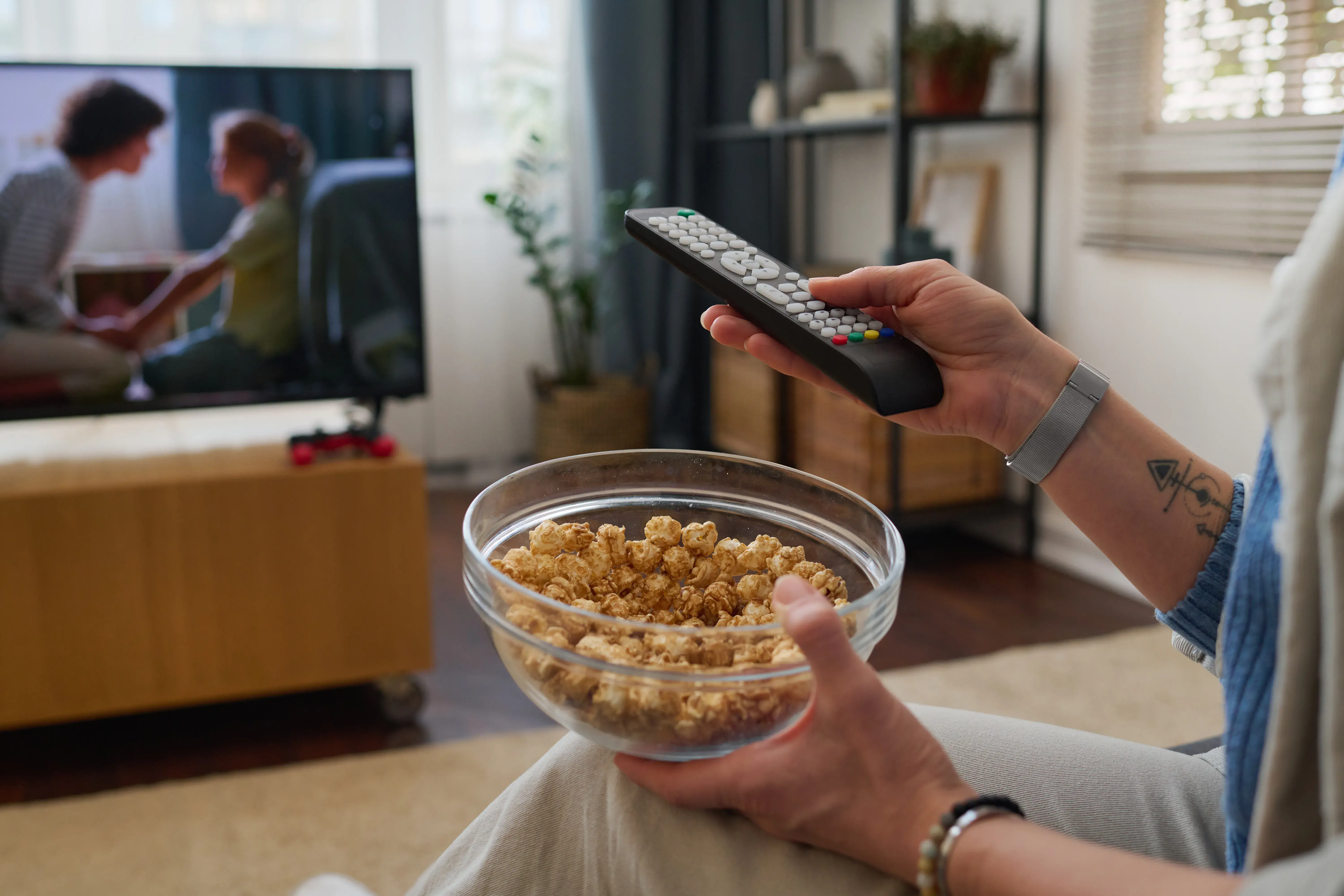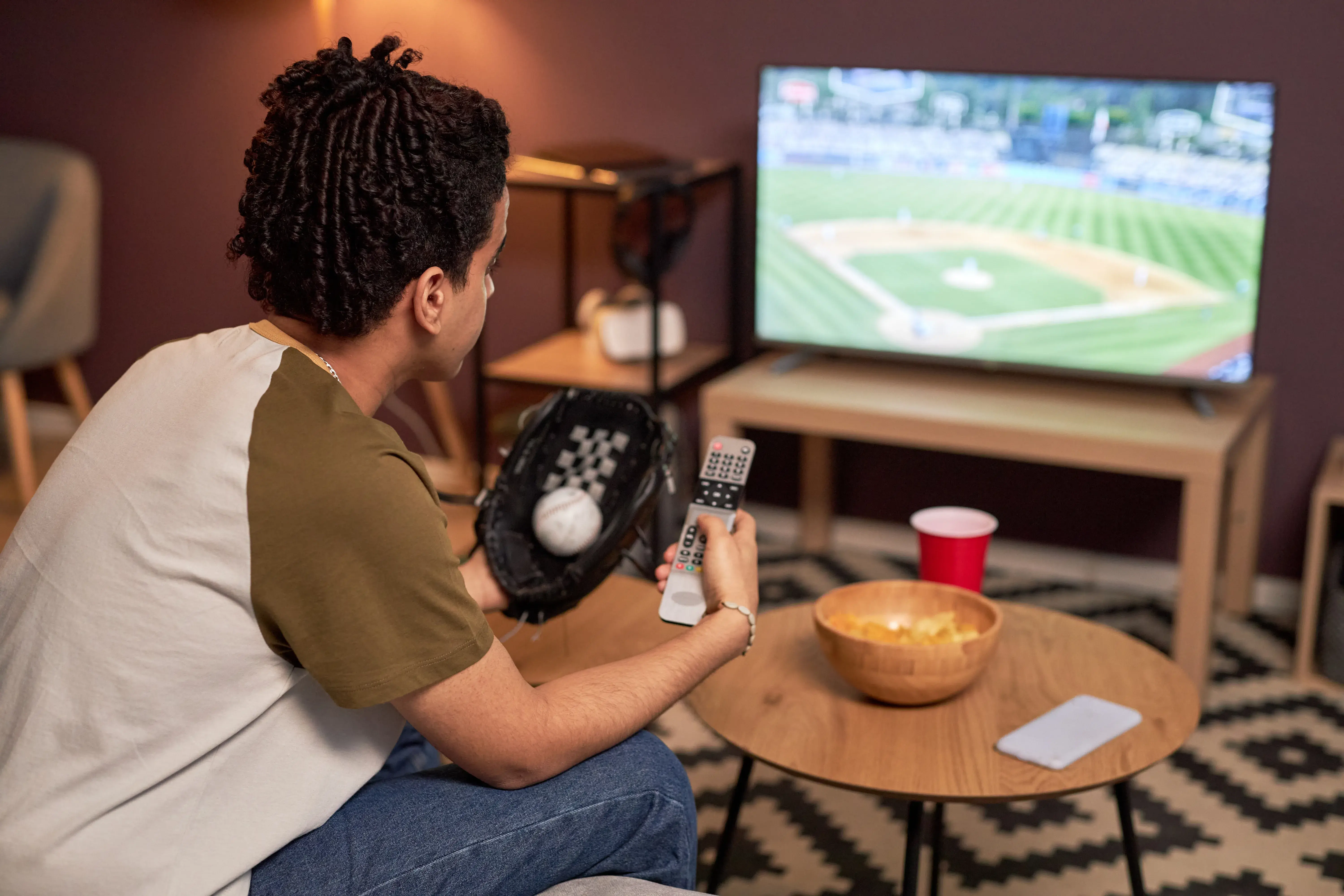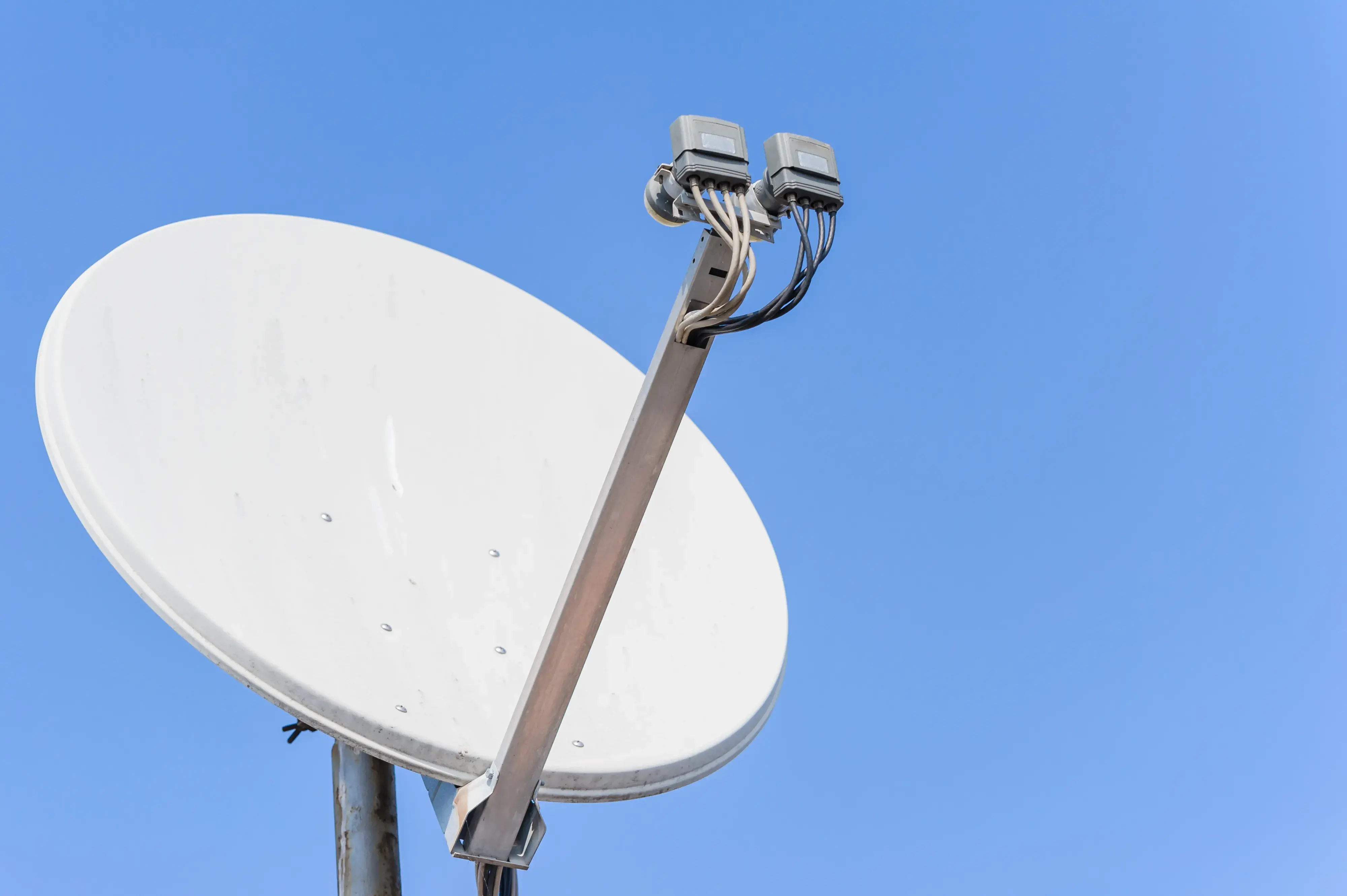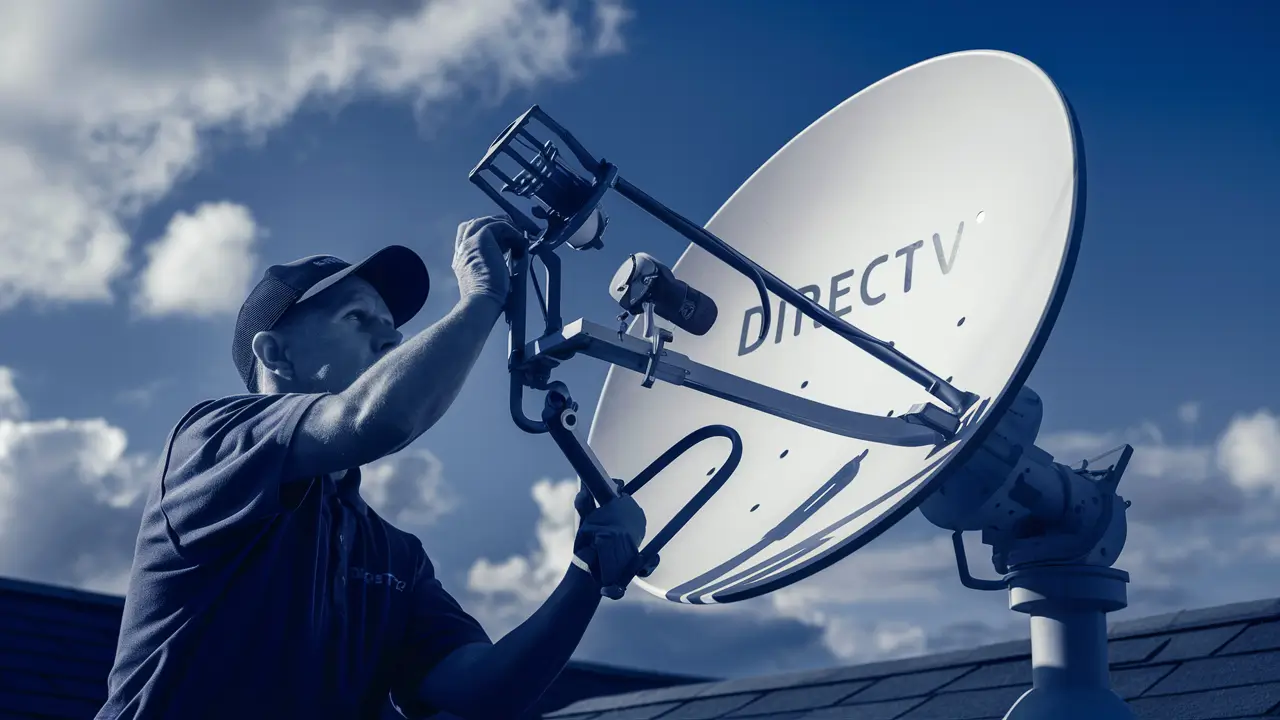
As with most satellite TV services the positioning of the DirecTV satellite dish is important in order to get the best signal and picture quality. While it is advised that the dish be installed by a professional, you are free to do the alignment yourself, which will save you some dollars. It is quite easy to point your dish to DirecTV after understanding some simple guidelines and getting the right equipment’s.
What You Need to Align a DirecTV Dish
- DirecTV satellite dish with LNB arm with a white background while positioned on the ground
- Holder for placing the dish, for example, pole mount or any other type of mount.
- Coaxial cable to connect the dish to the receiver
- Crimping tool and connectors to attach the cable
- Signal strength meter or satellite finder
- A wrench for tightening the mounts and dish alignment.
How to set the Azimuth, Elevation, and Skew settings
The data that you will have to input to make DirecTV dish point in the right direction are the azimuth, elevation and skew data of your area. These reflect the specific direction and orientation that one has to adjust the dish to in order to have a perfect signal from the DirecTV satellites.
This is done by visiting DirecTV’s website and entering the address, or by calling the customer service hotline. Write down the azimuth in degrees, the elevation in degrees, and the skew or the dish polarity that they suggest.
Install The Mount First
First of all, make sure the dish assembly is firmly installed on the roof, wall, balcony or any other structure that will give it a line of sight to the sky. Make sure the mount enables you to tilt the direction of the telescope in the horizontal plane and the angle of elevation of the vertical plane. In roof mount installations, ensure that all the seals are secure in a way that no water can penetrate the system.
Connect the other end of the coaxial cable that you will install the receiver to the house attic or crawlspace then to where the dish is going to be fixed. There must be a lot of extra length taken in the line. It is also important to connect any ground wires or electrical lines for supplying power to other related gadgets such as switchers, or pre-amplifiers if needed.
Attach The LNB Arm and Connect Cables
Screw the LNB arm assembly to the dish in the right position as recommended by the manufacturer on the hardware provided. The arm extends from the dish surface to collect the satellite signals that are focused on the dish and then direct them to the receiver.
Pass the coaxial cable through the base of the mount and screw on the weatherproof compression plug on the end of the cable to the opposite end of the LNB arm. Also attach any cables that provide power to the LNB to the dish. Encase splices in weather-tight junction boxes. Comply to all the electrical code requirement for outdoor electrical appliances.
If you want to get the best outcome, use a signal meter to maximize signal strength.
With the dish roughly put in the right azimuth and elevation, and the skew nearly right, the process of peaking signal strength using a satellite signal meter or satellite finder can begin. This will help you have the right positioning as you strive to have the best balance.
Satellite finders use an audible tone or flashing LED lights to indicate signal strength. Gradually tilt the dish and look at the signal meter to decide on the direction and angles that give the best signal. After adjusting the alignment, turn the adjustment bolts a little at a time until they are properly tightened.
For standard definition DirecTV service, you will synchronize the dish to satellites 101, 110, or 119W. For HD service, use satellites 99°c or 103°ca to adjust the dish for the best quality on high-definition channels.
Verify the Signal Strength of the Receiver
After you think that you have achieved peak alignment, you may check the signal strength and quality in the System Setup menu of your DirecTV receiver. The readings should be a minimum of 85 out of 100 to ensure stability in all weather conditions and optimal performance.
When the signal strength is bouncing in the 90s percentage range, that’s perfect signal, but when it falls to the 40s or below, there could be issues with reception during storms or interference. If your receiver readings are low, rerun signal meter alignment checks. To achieve the maximum level of reception, it may require several iterations of fine-tuning and cross-checking.
Troubleshoot Alignment Issues
If there is no good signal even after changing the alignments, then it means there is an obstacle that hides the dish from satellites, a defective LNB or arm, improper wiring, or other such concerns. Make a quick estimation by eye that the dish placement has an unobstructed view towards the southern sky and look for trees, buildings, hills and poles between the dish and the sky.
Check all connectors and cables for signs of corrosion or loose fittings. Check that no bends or splits result in signal loss in older coaxial cables. If present, replace the cables and fittings that are faulty in order to bring the signal back. Also inspect the LNB and the arm for any signs of damage or issues. If there are issues with the dish, then repair or replacement of the dish components may be required and this would require calling either DirecTV or a satellite pro if the problem is with the dish.
By following these steps, it will assist you in properly positioning your DirecTV satellite dish to attain the best signals from the satellites by identifying the correct azimuth, elevation and skew positions. Make sure to check signal strength at each adjustment point to get excellent reception quality.
Ready to upgrade your TV experience? Call us now at (877) 471-4808 to find the perfect Dish Network plan for you! Don’t miss out on great entertainment—our team is here to help you choose the best package and get you started today.

